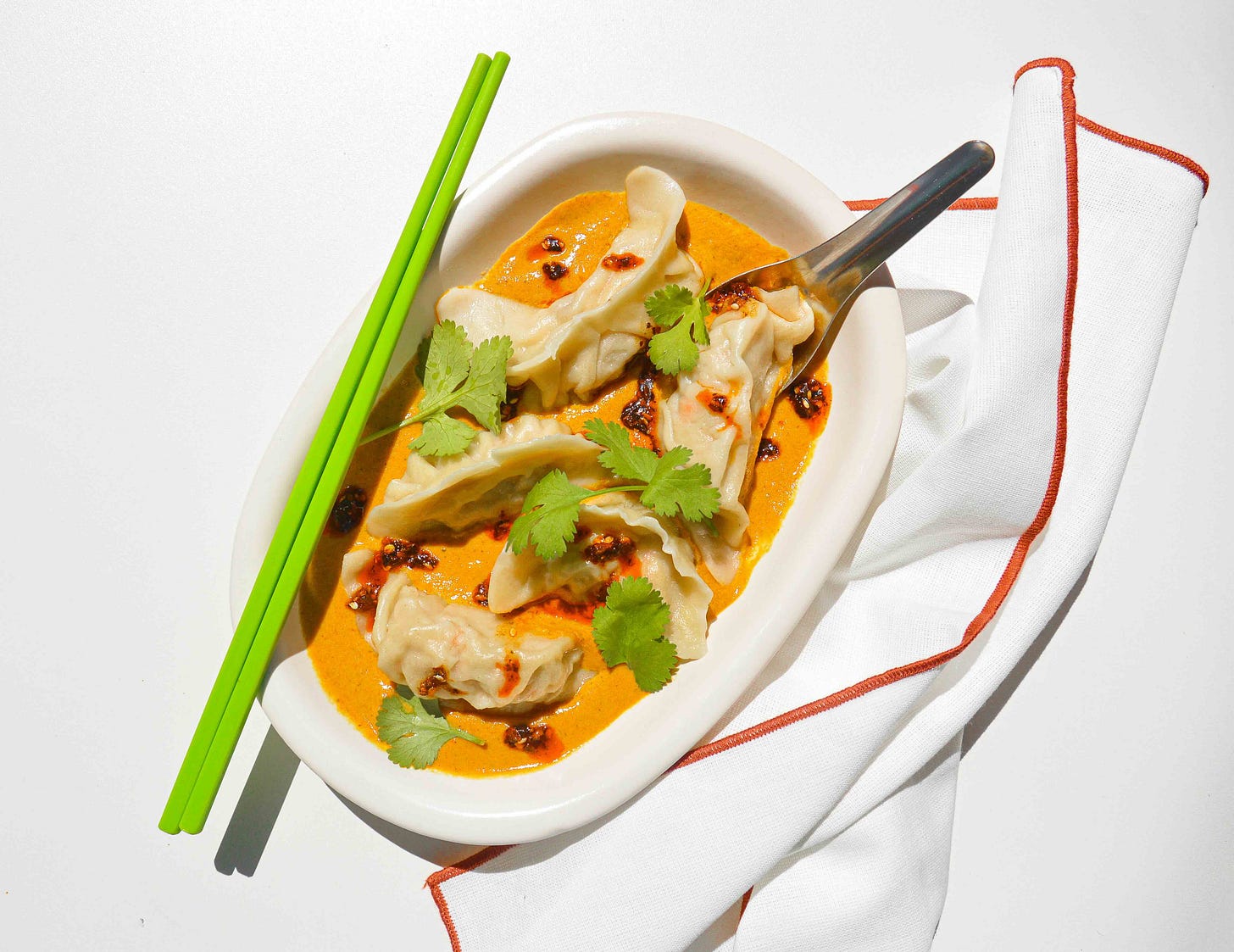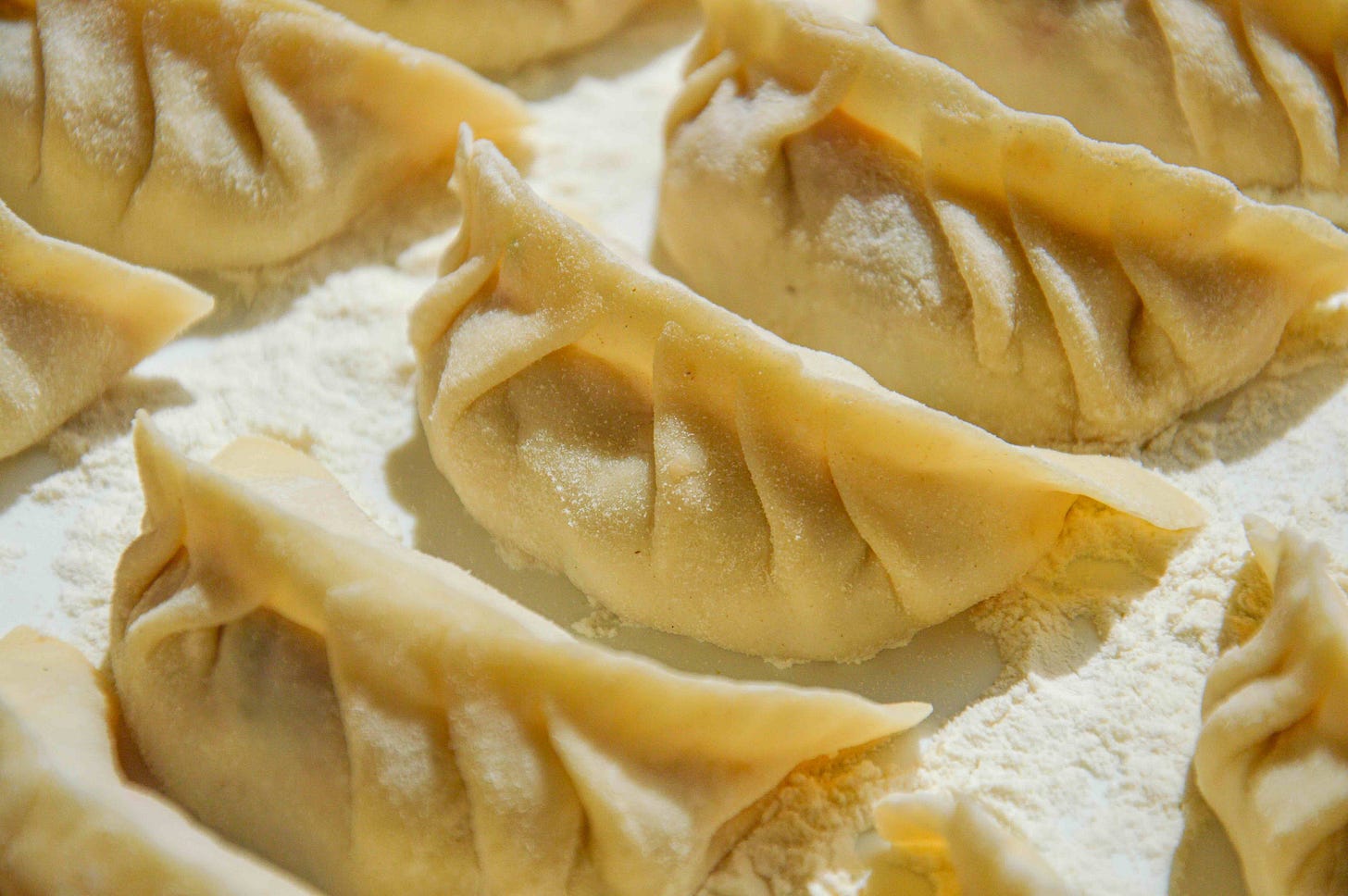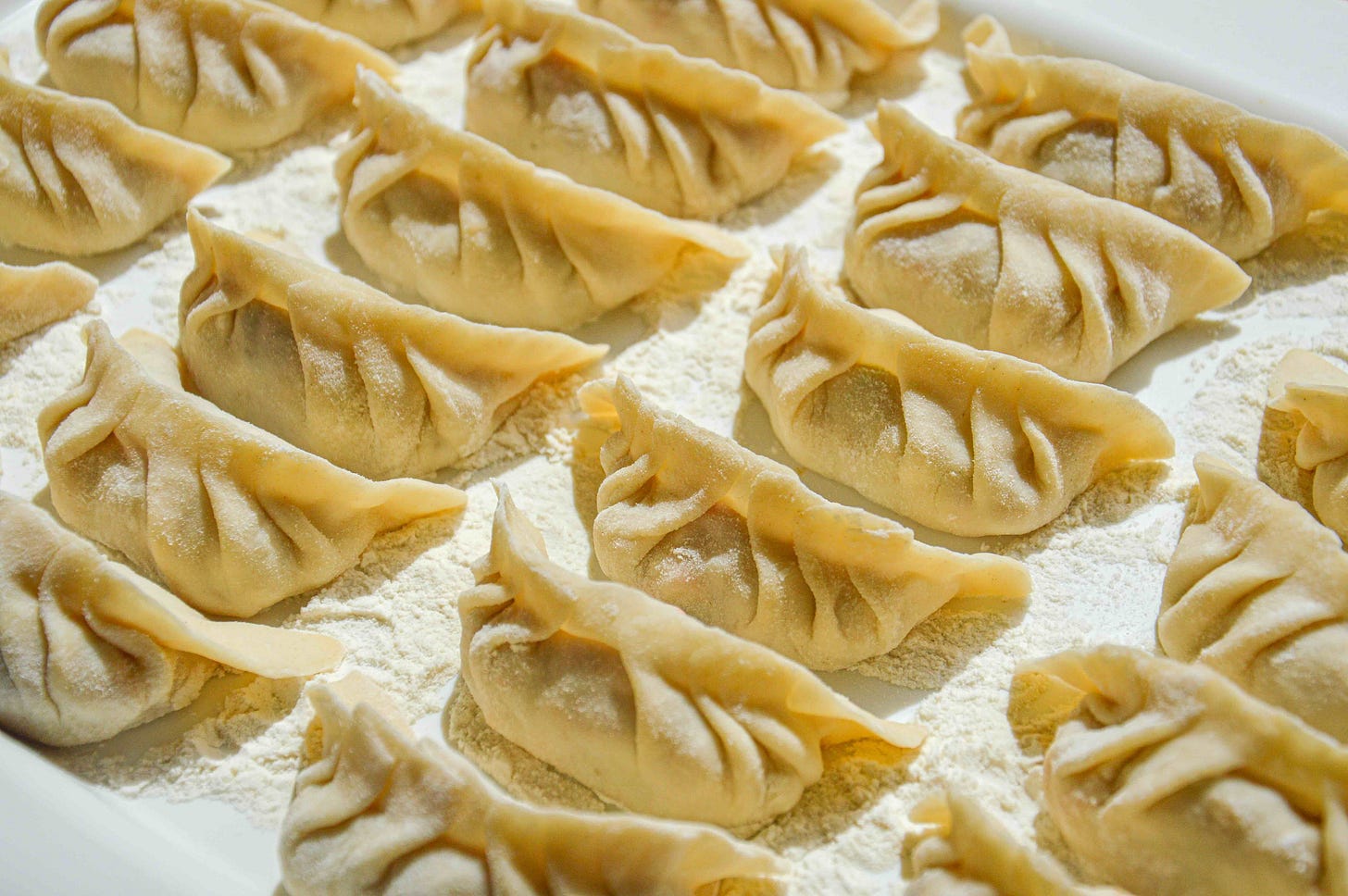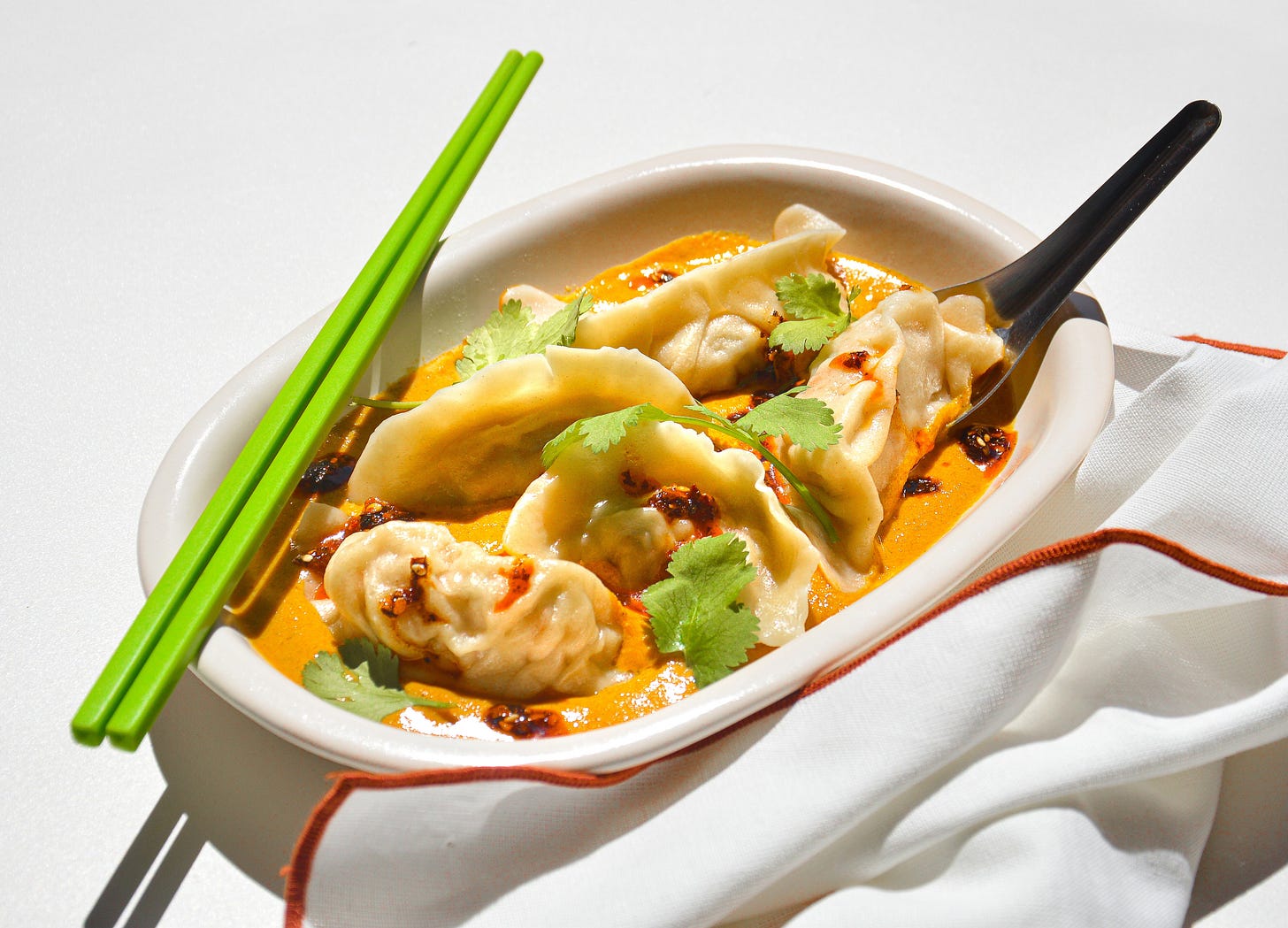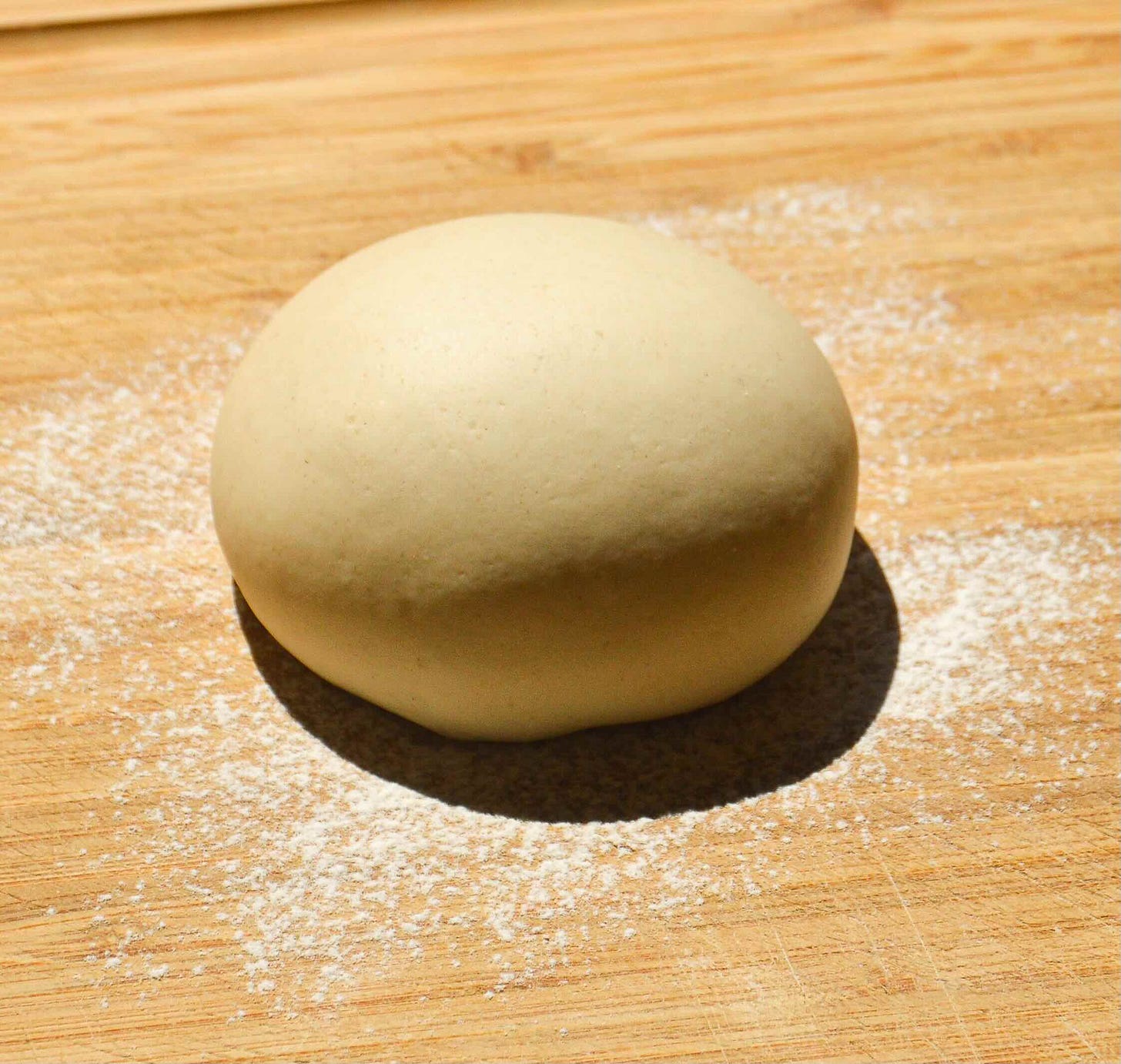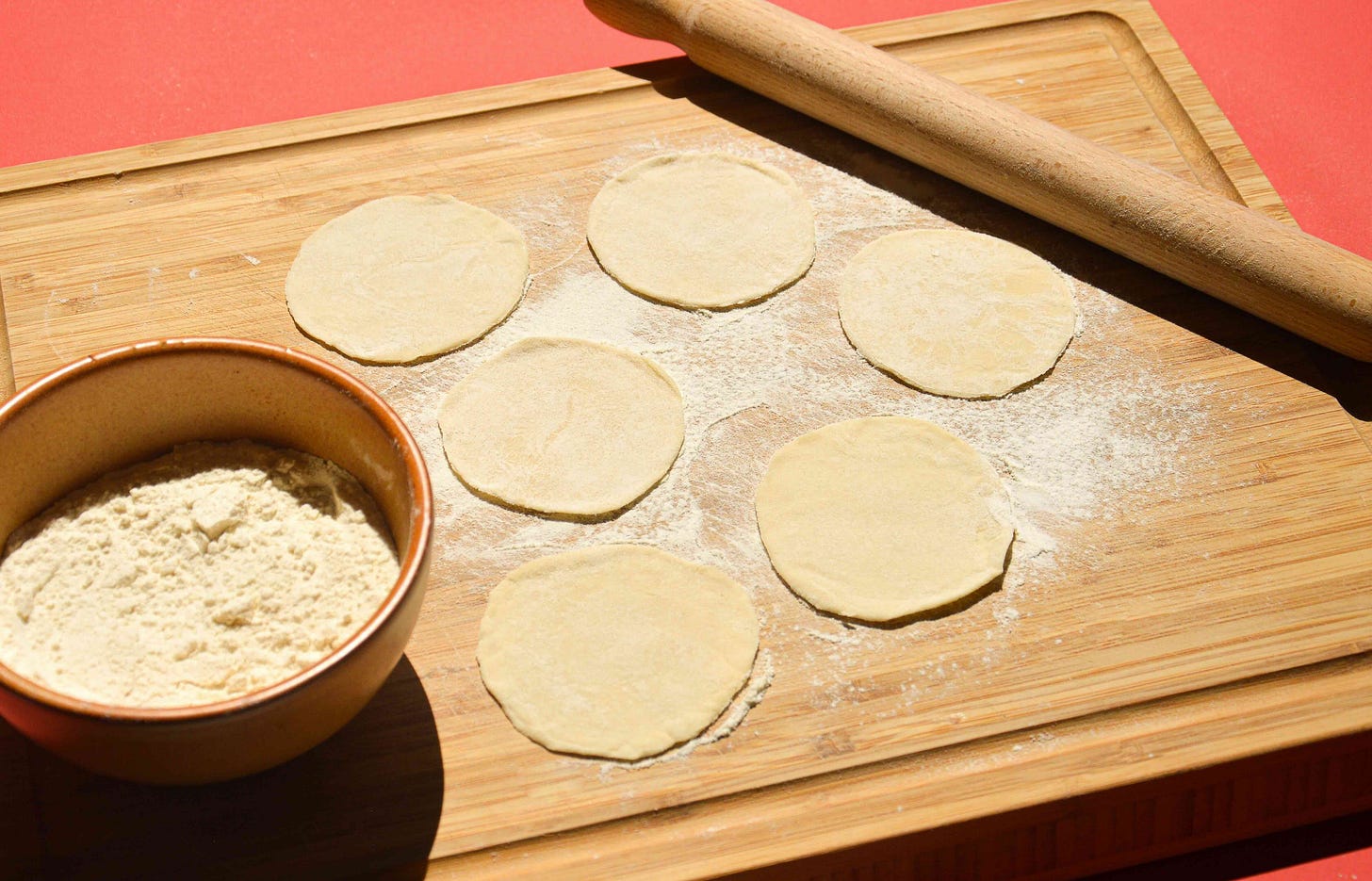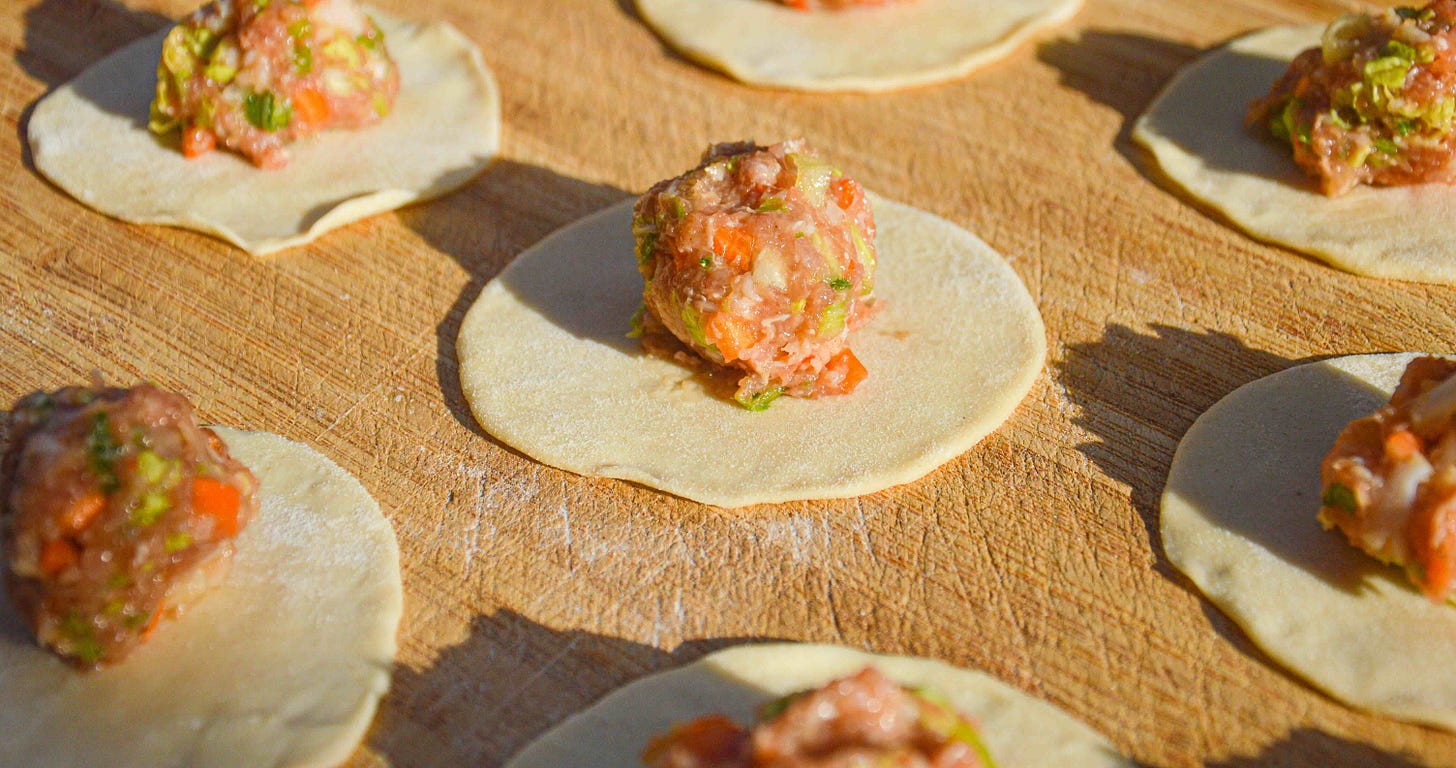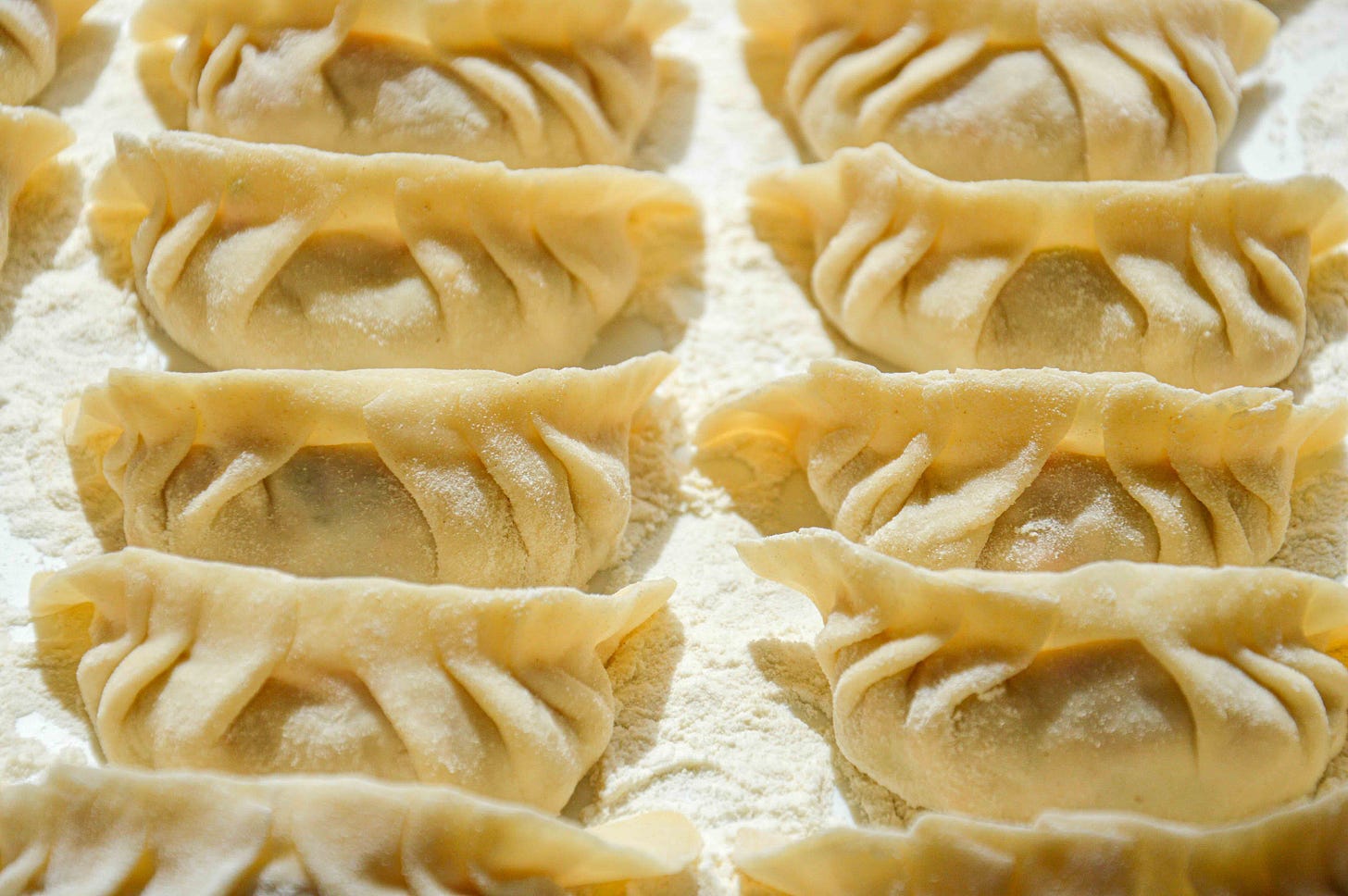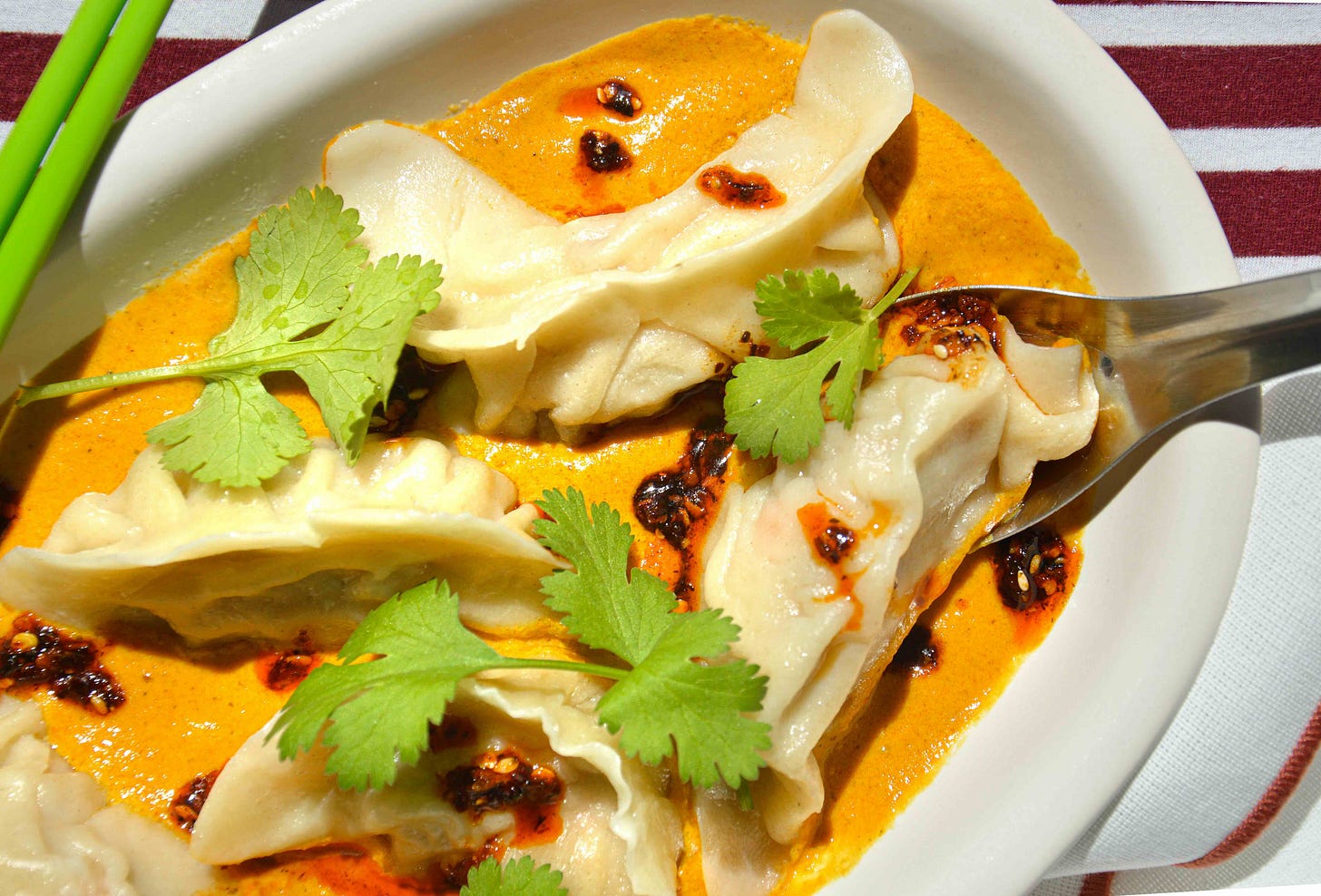
Juicy pork and shrimp dumplings served in a thick coconut sauce, chilli oil and coriander
Serve: ~26 dumplings
Ingredients:
Dough
250g of 00 (finely ground) flour with about 13% protein content
130g hot water
Filling
300g pork mince (at least 20% fat content)
150g shrimps
100g Chinese leaves
50g carrots
20g spring onions
20g coriander roots
1 garlic clove
25g oyster sauce
15g soy sauce
black pepper
sea salt
Coconut sauce
250g coconut milk
150g pork stock
30g white onion
20g coriander roots
12g lime juice
1 garlic clove
1 tomato
1 red chilli
10g curry powder
white sugar
sea salt
vegetable oil
For serving
chilli oil
coriander leaves
Method
Make the sauce
Roughly chop white onion, tomato, coriander roots, red chilli and mince garlic.
Heat vegetable oil in a pan over medium heat and add white onion. Cook until it softens and starts to caramelise. Add minced garlic and red chilli, season with salt and cook for a few more minutes. Stir in the curry powder and let the spice cook until fragrant for a few seconds. Add coconut milk and mix. Combine in pork stock, tomatoes and coriander roots. Season with salt and white sugar.
Simmer the sauce for around 20 minutes over low heat, stirring occasionally. After 20 minutes, turn off the heat and blend the sauce. Put it back on the heat, check the seasoning, add fresh lime juice and cook for another 10 minutes. Add more pork stock or water if you find the sauce too thick.
Make the dough:
Boil water in a kettle.
Sieve flour to ensure it’s lump-free and place it in a bowl.
Make a well in the middle and start adding hot water gradually (the exact quantity of water needed can be different from the recipe as the hydration depends on the local conditions like humidity and the type of flour you use). Hot water can make the finished dumpling dough more tender and springy while making it easier to work with due to lower gluten development.
Mix the water with the flour. Bring the dough together with your hands in the bowl (if it’s too warm to handle, wait a few minutes). Transfer it to the counter and start kneading for about 10 minutes. Once the dough is smooth, cover it with a clingfilm and let it rest for about 30 minutes outside the fridge.
Prep filling
Get rid of any wilted cabbage leaves on the outside. Cut the cabbage in half lengthwise and remove the core. Cut again into quarters, flatten the leaves with your palm and shred it with a knife. Place the cabbage in a bowl, add a pinch of salt (the salt draws out moisture from the cabbage via osmosis), massage it with your hands, and leave it on the side for around 15 minutes.
Grate carrot. Cut the spring onion in half lengthwise and then thinly slice it. Chop coriander stems and mince garlic clove.
If you use raw in-shell shrimps - deshell them, devein and finely dice them. I recommend keeping the shells and preparing a prawn stock for your next dinner!
Drain the cabbage, place it in a colander and rinse under cold water. Squeeze out all of the water left in the cabbage with your hands or place it in a cheese cloth or clean towel and squeeze the water out.
Combine pork mince, chopped shrimp and the vegetables in a big bowl. Season with oyster and soy sauce, black pepper and salt and mix until homogenous. If you want to check the seasoning before folding the dumplings - cook a small amount of the filling in a pan and taste and season more if needed.
Roll out the dough
Dust the working surface with flour and cut the dough in half. Shape the halves into long oblong rolls (as shown below). Cover one of the rolls with a clingfilm to prevent it from drying.

Cut the long roll into equal pieces with a sharp knife (around 13 pieces). Toss them with flour and place cut-side down (like below).

Grab a glass and press each piece down into a flat disc. If they’re quite sticky - dust with more flour.

Put a rolling pin in the middle of the wrapper, roll to the bottom, stop, and repeat with the top part. Rotate the disc 45 degrees and repeat the process of rolling the top and the bottom (check the video below). The final shape should be a circle.
Roll the edges slightly thinner by doing forward and back motions with the rolling pin with one hand and with the other hand holding and rotating the dough. This step is much easier if you move up and down the rolling pin rather than keeping it in constant contact with a chopping board (check the video below).
Stack the floured wrappers on top of each other and leave a few of them on the working surface.
Pleating
Prepare a big tray or surface and sprinkle it with flour. Keep some paper towel on the side as once you pleat your hands need to be clean and dry.
Add the filling in the middle of the wrapper - around 1 tablespoon. If you’re a beginner, try not to overload the dough with the mix otherwise you might have difficulties closing the dumpling. I recommend first trying to put less filling and see how you find pleating with the smaller amount.
Prepare a small bowl with water. If the wrapper edges are quite dry - dampen them (for me, this was not necessary though).
Close the dumpling in half and pinch in the middle with two fingers (as in the video below).
Pleat, beginning from the pinched centre folding to the left (the folds need to be folded towards the centre and you should have around 3 of them). Every time you make a fold, make sure to press the edge well, leaving no space inside. Repeat the process with the other half of the dumpling.
Once you finish pleating, press all the edges tighter once again so the dumplings don’t fall apart and lay them on the floured surface.
Bring a pot with water to a boil.
Serving
Warm up the coconut sauce.
Place dumplings in vigorously boiling water and cook until they float to the top. Remember not to overfill the pot - cook them in batches. If you’re unsure if they’re ready, take one out and test it.
Scoop the dumplings out. Transfer the coconut sauce to the plate, add dumplings and serve with chilli oil and fresh coriander.




